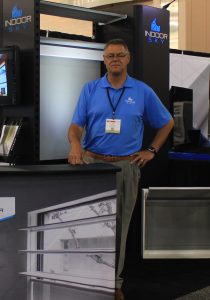Building an Innovative Enterprise: An Introduction to Design Thinking
 Why are some organizations able to innovate over and over again while others remain stagnant? The organizations that are able to consistently innovate, understand that creativity and innovation are not accidental – they are intentional. Design thinking is a human-centered creative process, which brings you to solutions of real, unmet needs in the world.
Why are some organizations able to innovate over and over again while others remain stagnant? The organizations that are able to consistently innovate, understand that creativity and innovation are not accidental – they are intentional. Design thinking is a human-centered creative process, which brings you to solutions of real, unmet needs in the world.
What to expect:
- Foundational principles of human-centered design.
- Some of the most popular tools of design thinkers.
- An overview of the process of Design Thinking – helping your team not just do creativity, but to be creative.
Host:
Rick Terry, Business Advisor, Innovative Manufacturers’ Center (IMC)
Presenter:
Mitch Marcello is the founder and director of Imago Innovation, a creativity and innovation firm. Driven by the belief that a complex world needs innovative solutions, Mitch is passionate about assisting leaders, teams, and organizations to understand and realize their creative potential. With a wide portfolio of innovation work, Mitch has assisted communities, colleges, architecture firms, law firms, and more to build workplaces where innovation occurs consistently. As an international speaker, Mitch challenges audiences to merge both science and art while contemplating the area of innovation. He holds a BFA from Carnegie Mellon University, a Master of Science in Creativity and Innovation from Drexel University and is the recipient of the Fredricka K. Reisman award in Creativity and Innovation.




